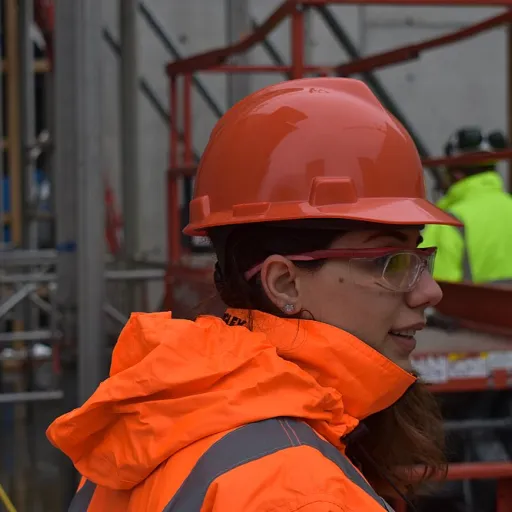
Understanding digital records in applicant tracking systems
What Makes Digital Records Essential in Modern Recruitment?
Recruitment has evolved rapidly with the adoption of digital systems. Applicant tracking systems (ATS) are now central to the hiring process, enabling organizations to manage large volumes of candidate data efficiently. These digital records are not just electronic versions of paper files—they are dynamic, searchable, and interconnected, supporting every stage of talent acquisition.
From Paper Files to Digital Transformation
Traditionally, hiring managers relied on physical files and manual processes to track applicants. This approach was slow, error-prone, and made it difficult to identify top talent or maintain compliance. Today, ATS platforms offer a paper-free solution, storing applicant information, resumes, interview notes, and communication history in a secure, centralized database. This shift enhances record keeping and streamlines the recruitment process for both employers and potential employees.
- Centralized data: All candidate records are stored in one place, making it easy to search, filter, and retrieve information.
- Enhanced tracking: Every interaction, from job application to interview scheduling, is logged and accessible.
- Improved employer branding: Consistent communication and efficient processes reflect positively on the organization.
Why Digital Records Matter for Talent Acquisition
Maintaining digital records is not just about efficiency. It supports better decision-making, helps identify potential employees, and enables data-driven recruitment strategies. With the integration of social media and other digital channels, ATS platforms can provide a holistic view of each applicant, ensuring that hiring managers have the information needed to attract and retain top talent.
For organizations seeking to enhance their candidate experience and stay ahead in the competitive talent market, understanding how digital records work in applicant tracking systems is crucial. For a deeper look at strategic approaches in HR, you may find this comprehensive FAQ on C-suite HR strategies insightful.
How ats platforms store and organize applicant data
How digital records are structured in modern recruitment
Applicant tracking systems (ATS) have become essential for recruitment teams aiming to streamline the hiring process and enhance their digital record keeping. These platforms are designed to store, organize, and retrieve vast amounts of candidate data efficiently, supporting both hiring managers and talent acquisition professionals. ATS platforms capture a wide range of information from candidates, including resumes, cover letters, interview notes, assessment results, and social media profiles. This data is stored in structured digital records, making it easy to search, filter, and compare applicants throughout the recruitment process. By maintaining digital records, organizations can ensure that every interaction and update is logged, creating a comprehensive history for each potential employee.Organizing and accessing candidate data
The core of any ATS is its ability to organize applicant data in a way that enhances the recruitment process. Most systems use customizable fields and tagging to categorize candidates by skills, experience, job applied for, and stage in the hiring process. This organization allows hiring managers to quickly identify top talent and track candidates as they move through different phases, from initial application to final interview scheduling. For example, digital records can be sorted by job title, application date, or even specific keywords related to the role. This flexibility not only speeds up the hiring process but also supports better employer branding by ensuring timely and personalized communication with candidates.Integrating with other digital systems
Modern ATS platforms often integrate with other HR systems, such as onboarding tools, performance management software, and even external job boards. This integration ensures that data flows seamlessly across the recruitment ecosystem, reducing manual entry and the risk of errors. It also supports a paper free environment, which is increasingly important for organizations focused on sustainability and efficiency.Enhancing recruitment with analytics and reporting
Another key feature of digital applicant tracking systems is their ability to generate analytics and reports. By analyzing digital records, HR teams can identify trends, such as which sources yield the best candidates or where bottlenecks occur in the hiring process. These insights help organizations refine their recruitment strategies and make data-driven decisions to attract and retain top talent. For a deeper look at how innovative HR strategies are shaping the future of digital recruitment, you can explore this article on innovative strategies in human resources.- ATS platforms centralize candidate data for easy access and management
- Customizable fields and tagging improve searchability and organization
- Integration with other systems enhances the overall recruitment process
- Analytics and reporting drive continuous improvement in talent acquisition
Benefits of digital applicant records for hr innovation
Unlocking Efficiency and Value in Recruitment
Digital records in applicant tracking systems (ATS) are transforming how organizations approach recruitment and talent acquisition. By moving away from paper-based processes, HR teams can streamline the hiring process, making it easier to identify top talent and maintain accurate, up-to-date records of potential employees. This shift to digital record keeping is not just about convenience—it is about enhancing the entire recruitment process and driving innovation in HR.
- Centralized data management: ATS platforms allow hiring managers to store and organize candidate data in one secure location. This makes it simple to access applicant information, track progress, and ensure consistency throughout the hiring journey.
- Faster decision-making: With digital records, recruiters can quickly compare candidates, review interview feedback, and move top applicants through the process without delays. Automated interview scheduling and communication tools further speed up the process.
- Improved employer branding: Efficient systems and timely communication enhance the candidate experience, reflecting positively on the employer’s brand. Candidates are more likely to share positive feedback on social media, attracting more potential talent.
- Enhanced compliance and reporting: Digital records simplify compliance with data privacy regulations and make it easier to generate reports for audits or white paper research.
- Paper free and sustainable: Maintaining digital records reduces paper waste and supports sustainability goals, which can be a key differentiator for organizations seeking to attract socially conscious employees.
These benefits are not just theoretical. Organizations leveraging innovative ATS platforms are seeing measurable improvements in their hiring outcomes and operational efficiency. For a deeper look at how digital solutions are enhancing HR processes and workflows, check out this insightful article on innovative HR approaches.
Challenges and risks in digital record management
Key Obstacles in Managing Digital Applicant Records
While applicant tracking systems (ATS) have transformed the recruitment process, maintaining digital records brings its own set of challenges. One major concern is the sheer volume of data generated during hiring. As organizations compete for top talent, the number of candidates and applications can quickly overwhelm digital systems. This can lead to difficulties in tracking, organizing, and retrieving relevant applicant data, especially when hiring managers need to make quick decisions.
Data Quality and Consistency Issues
Another challenge is ensuring the accuracy and consistency of digital records. Inconsistent data entry, duplicate profiles, and incomplete information can disrupt the hiring process and impact the quality of talent acquisition. ATS platforms must be configured to minimize errors and standardize data collection, but human error and system limitations still pose risks.
Security and Unauthorized Access
Protecting sensitive candidate information is a top priority. Digital records often contain personal details, employment history, and even social media links. If systems are not properly secured, there is a risk of unauthorized access or data breaches. This not only threatens candidate privacy but can also damage employer branding and trust in the recruitment process.
System Integration and Compatibility
Many organizations use multiple digital platforms for talent acquisition, interview scheduling, and record keeping. Integrating these systems can be complex, leading to data silos and inefficiencies. When ATS platforms do not communicate seamlessly with other HR tools, it can slow down the hiring process and create gaps in maintaining digital records.
- High data volumes can overwhelm tracking systems
- Inconsistent or duplicate records impact decision making
- Security vulnerabilities put candidate data at risk
- Integration issues reduce process efficiency
Addressing these challenges is essential for enhancing the candidate experience and ensuring the recruitment process remains paper free, efficient, and compliant. As digital record management evolves, organizations must continuously adapt their systems and processes to support both hiring managers and potential employees.
Ensuring data privacy and compliance in ats systems
Protecting Candidate Data in a Digital World
Applicant tracking systems (ATS) have transformed the recruitment process by making it easier to store, organize, and retrieve digital records of candidates. However, as these platforms become central to hiring and talent acquisition, ensuring data privacy and compliance is a top priority for HR teams and hiring managers. ATS platforms collect a wide range of personal data from candidates, including resumes, contact details, interview notes, and sometimes even social media profiles. This information is essential for tracking potential employees and enhancing the hiring process, but it also introduces significant responsibilities around data protection.- Regulatory Compliance: Organizations must comply with data protection laws such as GDPR, CCPA, and other local regulations. This means implementing strict controls over who can access candidate records and how long digital records are retained.
- Access Controls: Only authorized personnel should have access to sensitive applicant data. Modern systems offer role-based permissions to ensure that only those involved in the recruitment process can view or edit candidate information.
- Data Encryption: Leading ATS platforms use encryption to protect digital records both in transit and at rest, reducing the risk of data breaches.
- Audit Trails: Maintaining digital audit logs helps organizations track who accessed or modified applicant records, supporting accountability and transparency in the hiring process.
Building Trust Through Transparent Record Keeping
Candidates expect their personal data to be handled with care. Transparent communication about how applicant tracking systems use and protect their information can enhance employer branding and candidate experience. Clear privacy policies, consent forms, and options for candidates to manage their data are now standard best practices. For HR leaders, investing in secure, compliant ATS platforms is not just about avoiding fines—it’s about building trust with top talent and potential employees. As digital transformation continues to reshape recruitment, maintaining robust data privacy standards will remain a key differentiator for organizations seeking to attract and retain the best candidates.Impact on candidate experience and future trends
Shaping the Candidate Journey with Digital Innovation
The shift to digital records in applicant tracking systems (ATS) is transforming the candidate experience in recruitment. Today, candidates expect a seamless, transparent, and engaging process from application to hiring. ATS platforms play a crucial role in meeting these expectations by streamlining communication, automating interview scheduling, and providing real-time updates on application status. ATS platforms allow candidates to track their progress, upload documents, and interact with recruiters through integrated messaging. This digital approach reduces uncertainty and helps candidates feel valued throughout the hiring process. For hiring managers, maintaining digital records means faster access to applicant data, making it easier to identify top talent and potential employees.Enhancing Employer Branding and Talent Acquisition
A modern, digital recruitment process reflects positively on employer branding. When organizations use advanced tracking systems, they demonstrate a commitment to innovation and efficiency. This can attract top candidates who are looking for forward-thinking employers. Additionally, digital record keeping supports a paper free environment, aligning with sustainability goals that resonate with many job seekers.Emerging Trends and the Future of ATS
The future of applicant tracking is closely tied to advancements in artificial intelligence, data analytics, and integration with social media. These innovations are set to further personalize the candidate journey, enabling more targeted communication and better matching of applicants to job opportunities. As systems become more sophisticated, the recruitment process will continue to evolve, offering enhanced experiences for both candidates and hiring teams.- Automated interview scheduling reduces delays and manual errors
- Real-time feedback and status updates keep candidates informed
- Integration with social media expands the reach for talent acquisition
- Data-driven insights help identify and engage top talent efficiently










